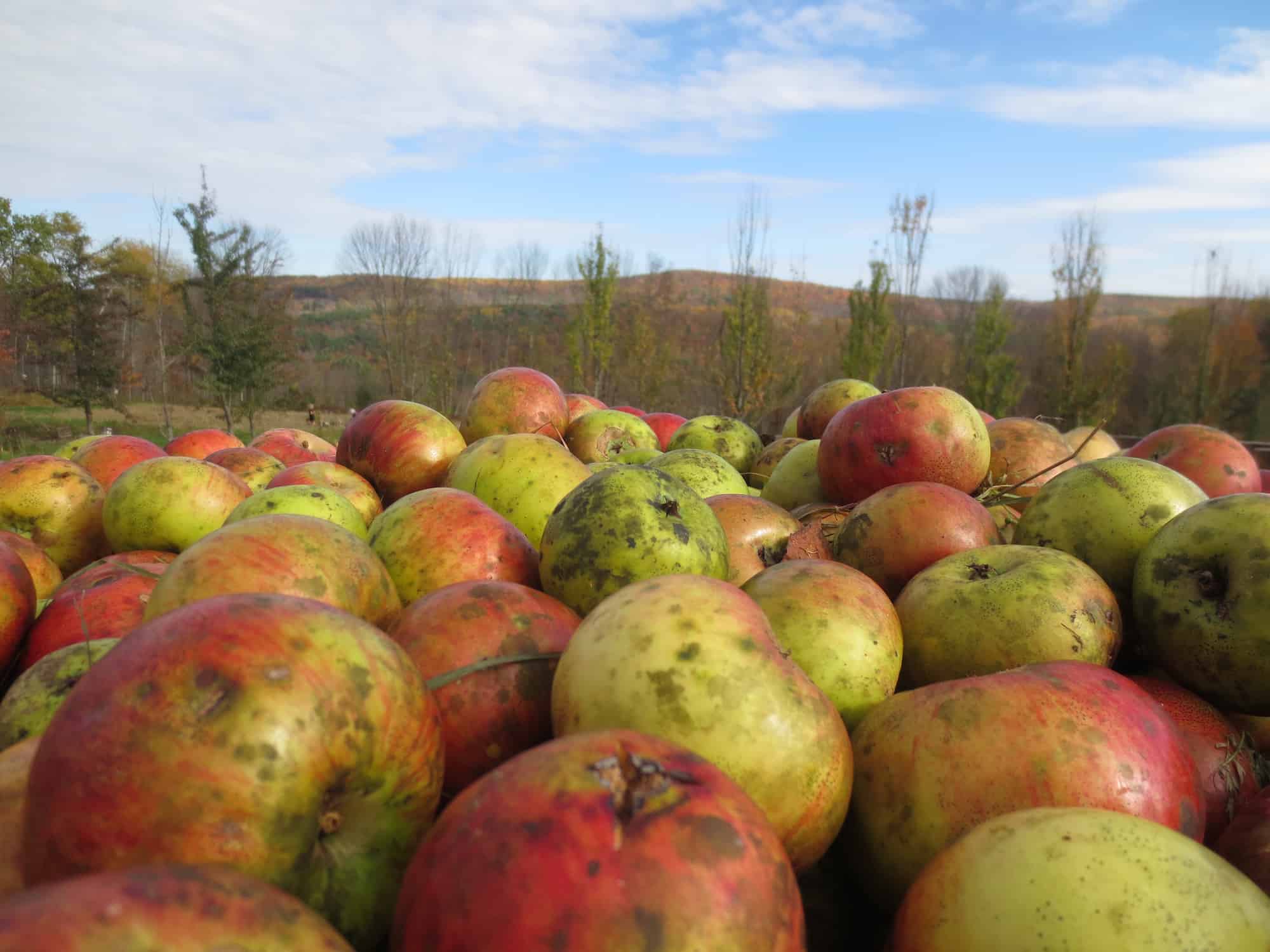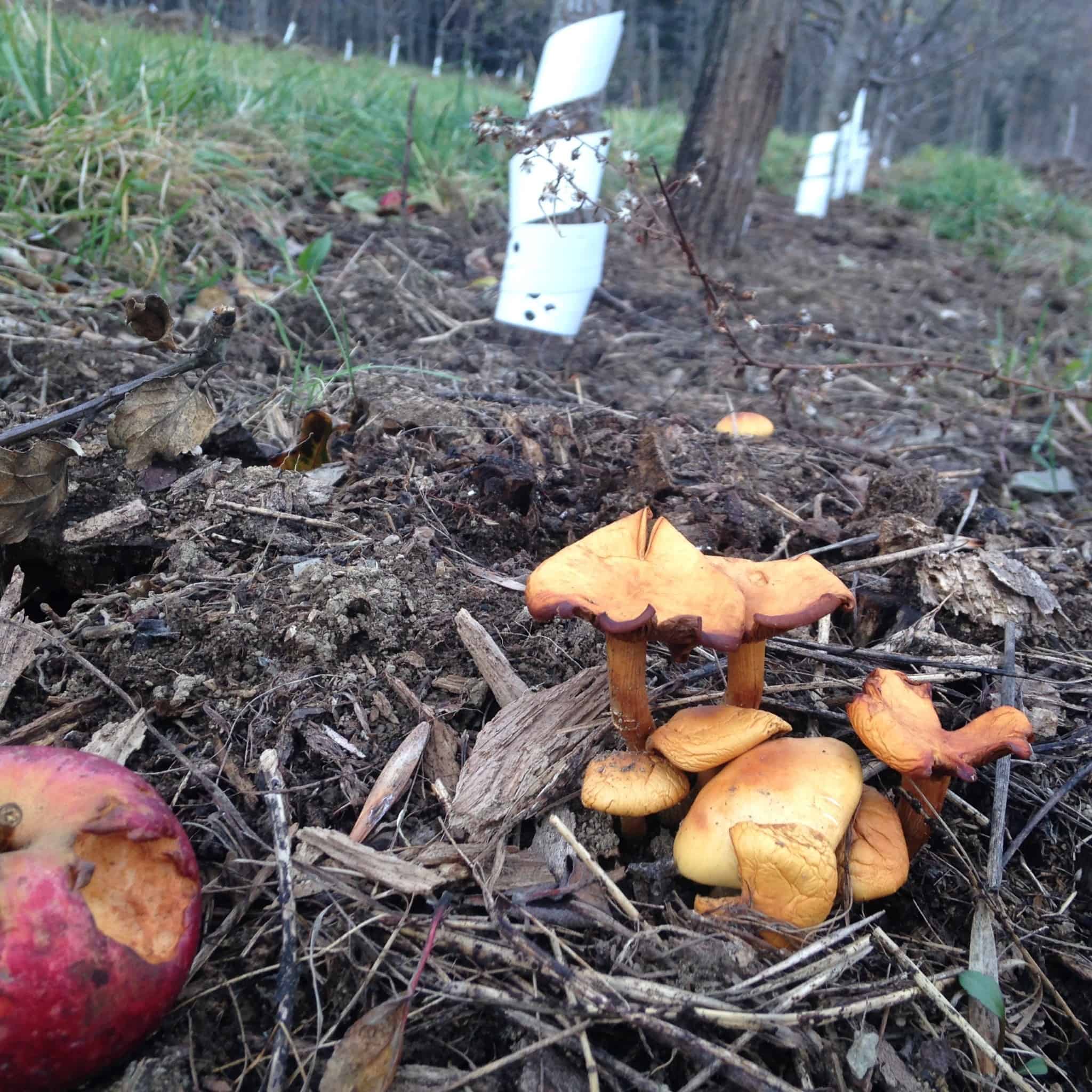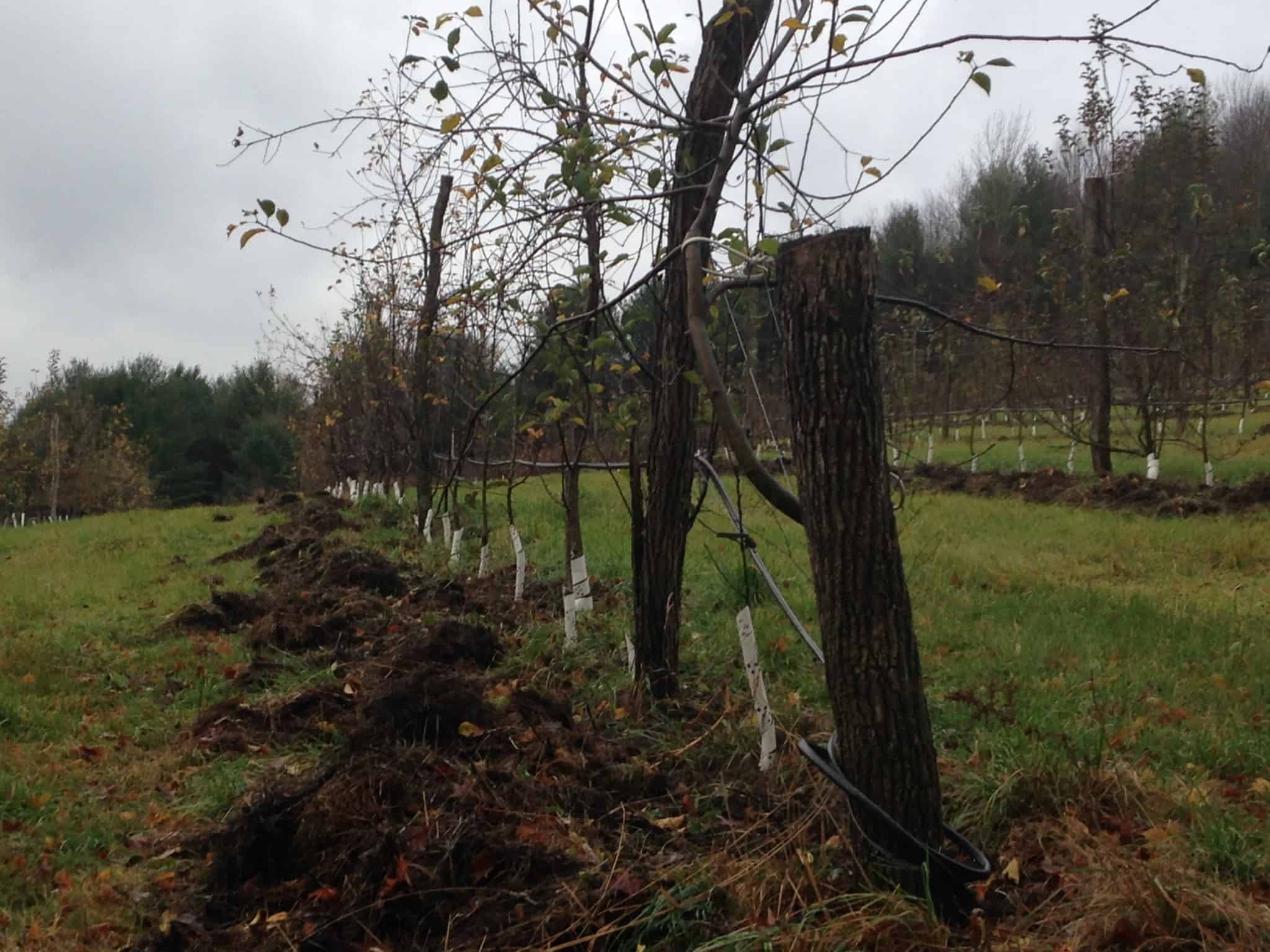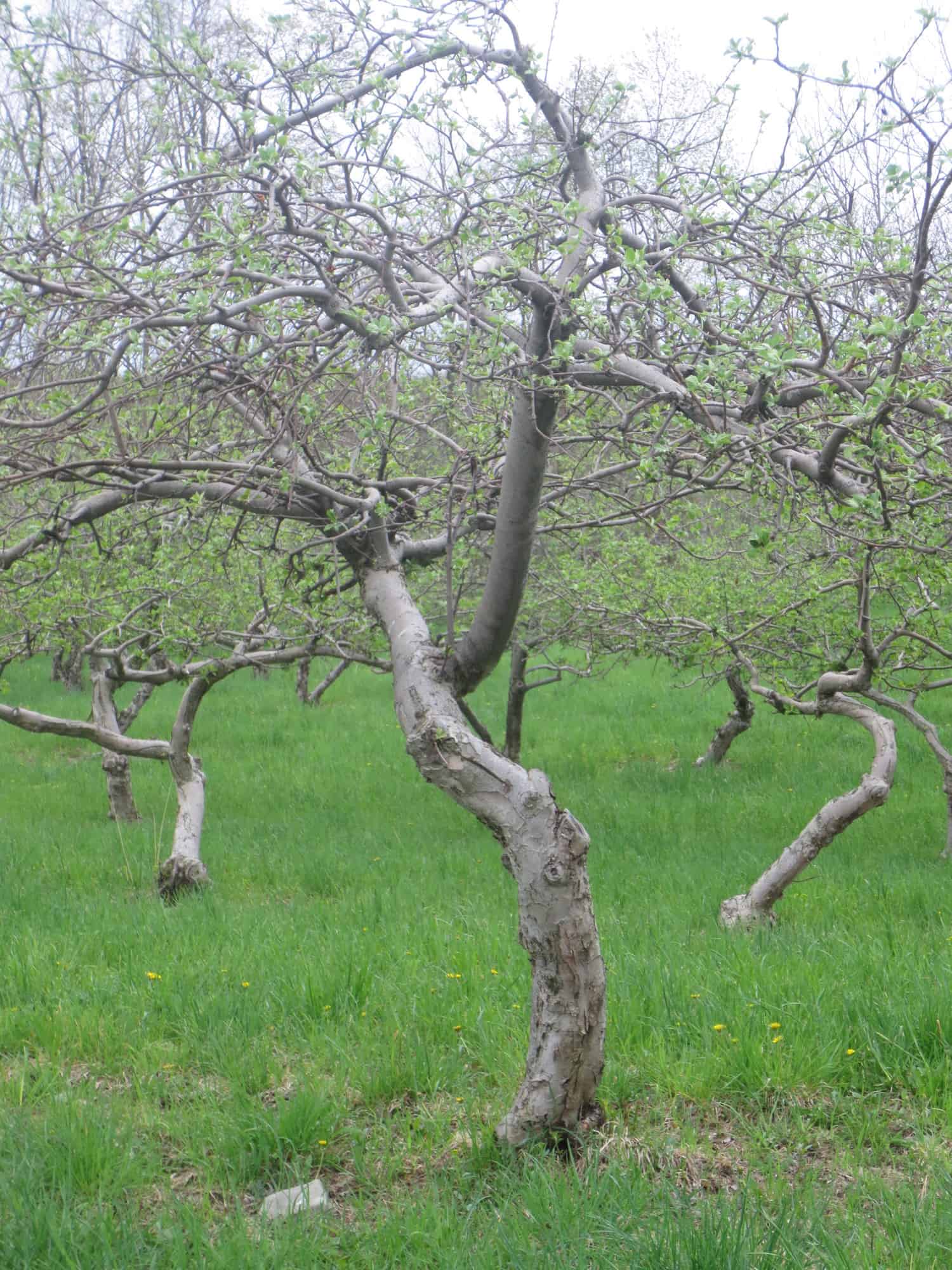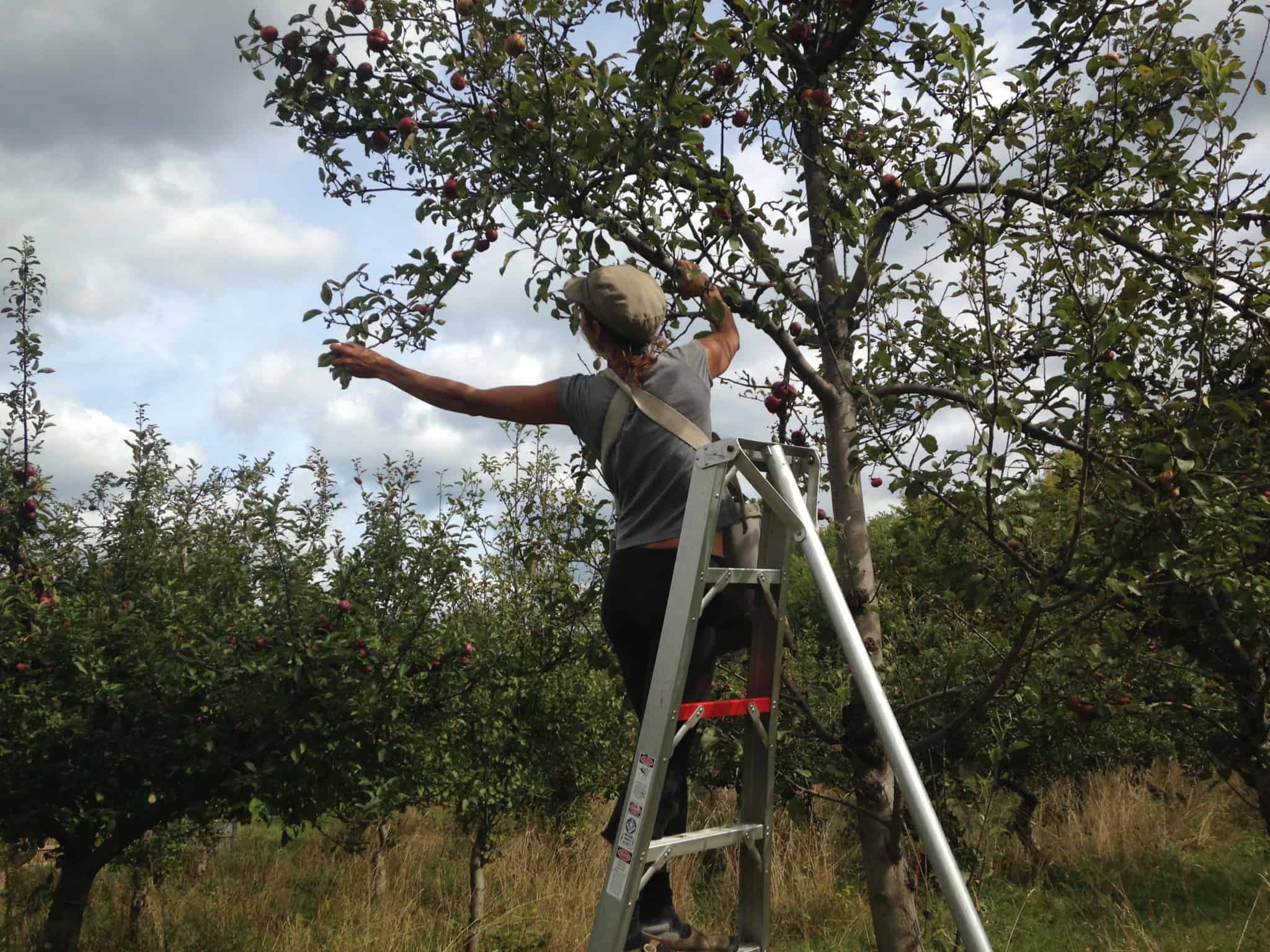Growing Apples For Cider
The three pillars of quality cider fruit are the varieties used, where they were grown, and the way they were grown. This principal is widely accepted in wine grape growing, yet is still a controversial topic in apples.
This isn’t university-backed research science here. This is my observation from the nearly two decades that I have been involved in growing apples. Anybody that has experienced how bland a tomato from the supermarket is compared to the one grown her garden knows what I am talking about.
Here are some of the different elements we believe grow quality fruit for cider.
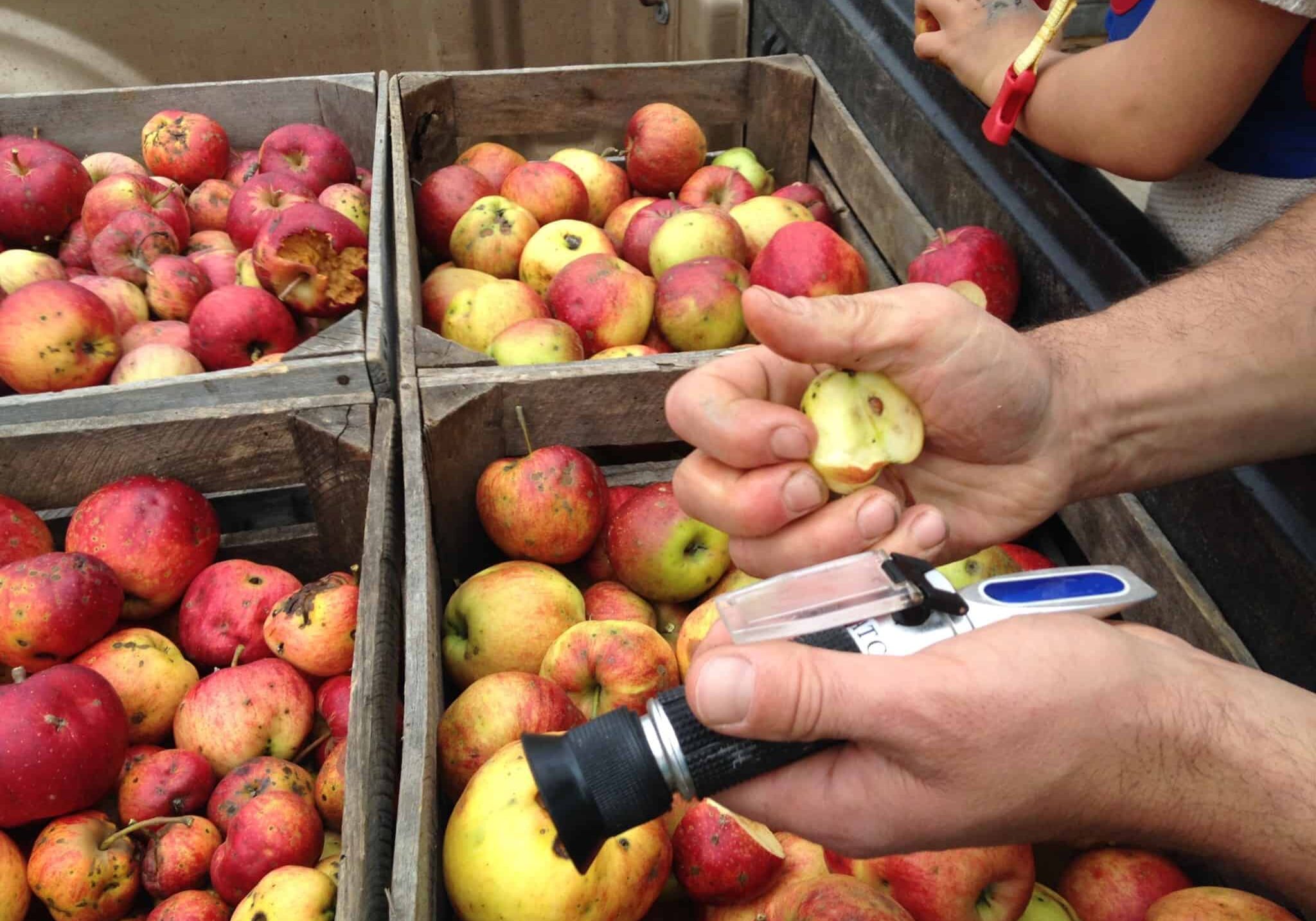
ELEMENTS OF GROWING GOOD FRUIT FOR CIDER (according to us)
ALLOWING THE PLANT TO HAVE AN IMMUNE SYSTEM
Research has shown that plants respond to attacks from pests and diseases by producing phytochemicals. Tannins are a type of phytochemical. So are complex flavor precursors in cider. 80% of spraying in apple growing (whether organically or conventionally) is done for cosmetic purposes.
We believe that keeping a tree in an environment where it never has to use it’s immune system results in bland fruit.
A LIVING SOIL
This is one of the most little understood aspects of agriculture today. The microbiome, whether in our gut or in the soil, does more than just decompose things. It’s a magical mysterious place, conferring health and wellbeing to the host, allowing plants to communicate with each other, and allowing plants to reach minerals and nutrients they otherwise couldn’t access through amazing networks of mycorrhizae.
IRRIGATION
Irrigating a tree to size up apples to meet super market standards fills the fruit up with water, diluting the constituents of the juice. Older trees on large rootstocks have roots that can reach deep into the earth finding moisture in all but the driest summers. Smaller, younger trees can be mulched to stop evaporation and to build soil carbon content for better moisture retention.
NITROGEN
Highly fertile soils result in too much nitrogen in the fruit. Nitrogen is a yeast nutrient and when it shows up in excessive quantities in juice it leads to rapid fermentations which result in loss of aromas and can result in H2S problems. Conversely, we have found fruit with very little YAN (yeast available nitrogen) does best with the long slow buildup of a wild ferment and lends itself to more complex fermentations.
RIPENESS
Apples picked for eating are almost never picked when fully ripe. This is because a major element of the eating apple is it’s crispness. Apples grown for cider should be picked at maximal ripeness. For many varieties, especially the European cider varieties, this means waiting until the apples drop to the ground. For others, this means waiting until the flavor and sugar peaks, a point at which the apple is often soft and reeking of ripe aromas.
I have had the opportunity to taste cider varieties from different growers on different sites that were so different it was hard to believe they were the same variety.
I believe that the differences were more due to growing practices than to site.
Terroir is subtle; growing cider apples like they are a supermarket commodity is not. Apples that are grown to have maximum yields on trees that are completely free from pests and disease because of a rigorous spray program, grown on bare herbicide strips, fertilized with chemical fertilizers, irrigated for size and picked early to retain a crisp texture are large, cosmetically perfect and abundant, but not suitable for high quality cider.

